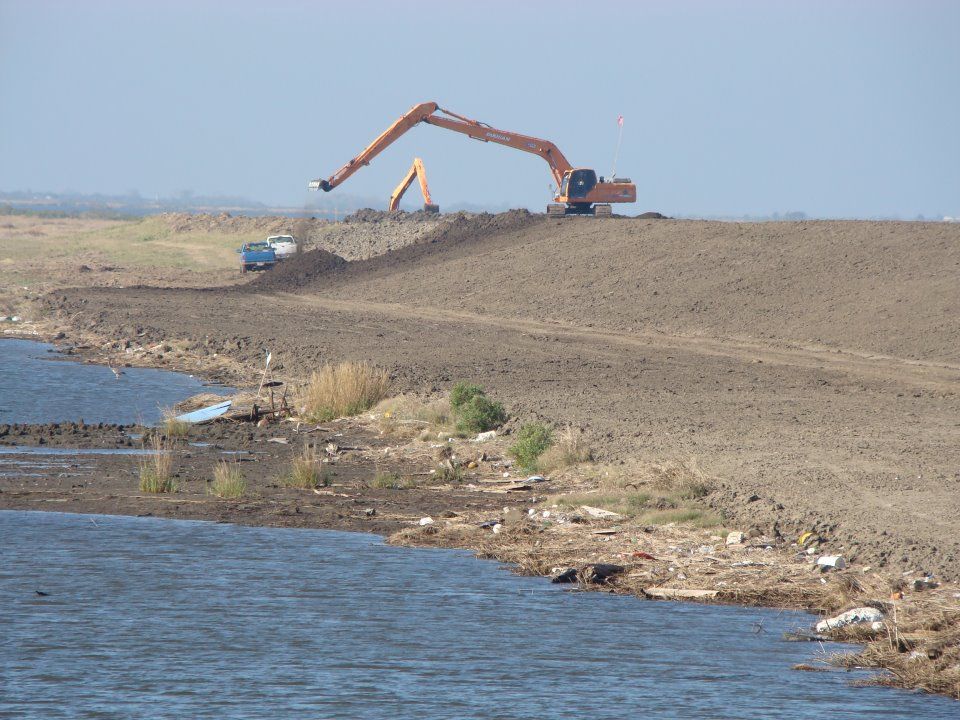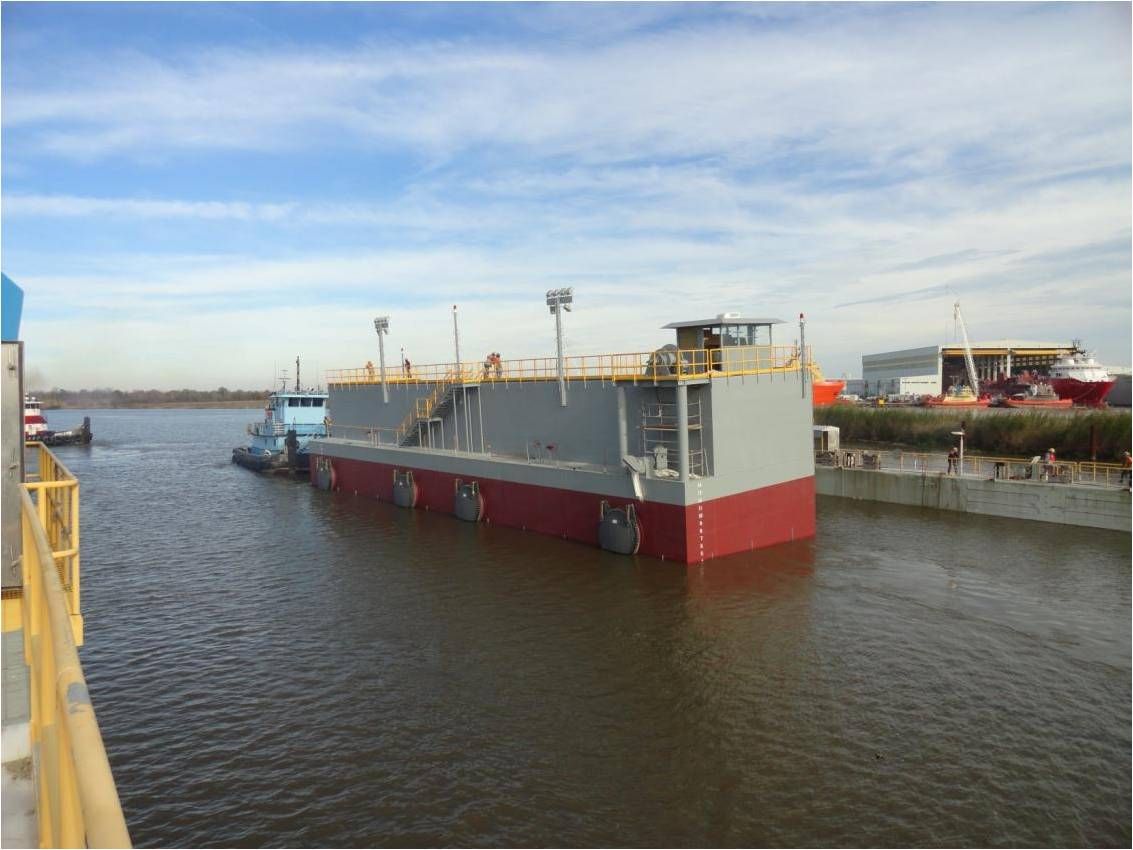
South Lafourche’s ring levee proven storm defense
June 10, 2015Flood study finds fewer homes at risk for hurricane flooding
June 10, 2015With more floodgates and earthen levee additions than ever before, the storm protection system that stands between Terrebonne Parish residents and deadly storm surges is being hailed by officials as beyond what was thought possible years ago.
Asked if Terrebonne residents are safer as the 2015 Atlantic hurricane season gets underway, the answers all around were “yes.” But the “yes” comes with a qualification.
While vast areas of Terrebonne and portions of Lafourche are deemed safer from floodwater effects, officials also warn that flood control infrastructure is still no substitute for sound decisions when storms threaten the area this hurricane season.
“Don’t bet your life on any hurricane or levee system,” said Reggie Dupre, director of the Terrebonne Levee and Conservation District. “Property is one thing, life is something else, even with an improved storm surge protection system.”
While measurable progress has been made, Dupre and other officials note, the Terrebonne system, including the centerpiece Morganza-to-the-Gulf alignment, is still a work in progress.
“Every shovel of dirt helps but in no way are we where we need to be,” said Terrebonne Parish President Michel Claudet. “We need a concerted and continued effort and some of God’s blessing to give more time to obtain our permits and to put up our levees. Have a plan. Make certain your loved ones, neighbors and pets are planned for and safe. Be alert and heed any directives that may be given about the storm and, particularly, concerning evacuations.”
The most visible – and presumably effective – components of the Morganza system include the Bubba Dove floodgate and structures on the Houma Navigation Canal and Bayou Little Caillou.
Morganza is a 98-mile system of levees, floodgates and other water-control structures stretching from Gibson to Lockport. Federal authorization in the Water Resources Reform and Development Act – while not likely to result in hands-on federal construction – is making permits required for the parish’s own construction easier to obtain.
The finished project would protect 200,000 residents as well as industrial and infrastructure interests with protection reaching as high as 18 feet and as wide as 725 feet.
Local officials have made use of two separate levee taxes approved by Terrebonne voters, including a half-cent sales tax levied in 2012 for a span of 28 years. Instead of aiming for the federal standards on its own, the Terrebonne Levee and Conservation District is working to construct the system’s footprint.
Dupre explains it as a system connecting the five fingers of Terrebonne from Pointe-aux-Chenes to Gibson together. The last big gap, Reach E, which connects the Navigation Canal to a portion of Bayou Dularge just south of Falgout Canal Road, will “pretty much” achieve that goal, Dupre said.
The levee district is now advertising for bids related to that construction.
Already, portions of the parish that were inundated during prior flood events will now have the effects mitigated, and proof of that, he said, has already been seen.
“If you add these efforts together with what the parish government has done, taken these ring levees and making them storm surge levees, we have multiple lines of defense from what I see,” Dupre said. “We are light years ahead of where we were but not as far as we should be.”
The history of Terrebonne’s modern hurricane protection efforts – leading to the Morganza project and a compelling list of related public works projects – had its beginnings not in one of the major category killer storms, but a slow-moving and wet system named Juan.
The 1985 system’s maximum sustained winds never reached a speed higher than 85 mph. But the effects of its flooding were substantial.
“It was a late October Category 1 hurricane with low steering currents,” Dupre said. “It drifted or stayed stationery on our coast and drifted back and forth.
“The small coastal communities had flooded that never flooded before,” he said. “These small parish drainage levees, small banks built in the ‘60s and ‘70s were not adequate to hold back true storm surge. The wind didn’t blow hard enough to blow down the power poles. But had just taken over my family’s small grocery store in Pointe aux Chenes. The electricity was on but there was 10 inches of water in the store.”
Four years later, the Boudreaux Canal floodgate was built in Chauvin. Dupre credits then U.S. Rep. Billy Tauzin, R-Chackbay, with helping to secure money for a comprehensive system.
The Morganza project was a continued victim of federal red tape, leading voters to eventually vote to tax themselves.
“So now here we are, with a massive effort going on with state and local dollars,” Dupre said, noting that what caused Terrebonne and Lafourche to wake up was Gustav, and also Hurricane Ike, in 2008.
Different local landscapes have presented formidable challenges.
Dulac, surrounded by water, has been one of the more problematic, Dupre said.
“Dulac is difficult to protect,” he said. “Today, we have levees completely around the southern perimeter of Lake Boudreaux though there are a couple of gaps.”
“Every storm is unique,” Dupre said. “There are so many factors, wind speed, the actual footprint in terms of how large an area. Some storms are very small, others take up half the Gulf of Mexico.”
Even though Gustav was a direct hit on Cocodrie at a Category 2 level, its 18-mph forward speed was a boon. A Category 3 or 4 that takes a while to move through the area could be far more destructive; even the current flood control system is no guarantee of a favorable outcome.
Dupre said the worst-case scenario is still a powerful storm that falls to the west of the area, and the slower-moving it is the more control structures will be strained. Nonetheless, a slow mover like Juan, even if winds are minimal, could be devastating.
“We can repair downed power lines, we can repair roofs and trees in the road,” Dupre said. “It is much more difficult to recover from a storm surge that floods an entire community.”
Residents interviewed over the past week generally said they do feel safer because of all the construction and improvements., but are also taking a realistic approach.
“No way it will stop a Category 5, but it will slow it down,” said Dularge seafood buyer Al Marmande. “It will slow it down. The Gulf is in my back yard now. They’re trying. And I pray we never have to find out.”
Darlene LeBoeuf, a former Chauvin resident who has relocated to Arkansas, still has relatives in Terrebonne Parish and has strong concerns.
“They always took so long to make the levies and when they break, they patch them by patching,” LeBoeuf said. “If they would do a better job at making them, the people would feel more secure. So no, I don’t trust the levies.”
Marty Thibodeaux, chief of the Little Caillou Volunteer Fire Department, has worked countless rescues on water and land due to storms, and while also maintaining a practical attitude, is breathing a little easier this storm season.
“I do feel a lot safer,” Thibodeaux said. “I have personally seen the old levee keep water out of the Chauvin area several times during hurricanes. And those levees weren’t very big. The levees they are building today are a lot of height and just as important very wide. These levees just have to buy us time till the storm moves by. In some cases, a few hours or, even days, in others. Even if the levees should overtop there are large areas for the water to go in. There are secondary levees around most communities to buy us even more time. These are not the drainage levees that were built in the ‘80s thank God, but yet they did work from time to time.”
Laura Browning, who lives in Montegut, has a more philosophical approach. She doesn’t place faith in levees, but is not convinced that avoiding storm effects is the overall best thing.
“I can say, with all honesty, I do not feel safe during hurricane season, no matter what systems are built,” said Browning, whose late husband, Chris Towns, did consulting work with the U.S. Army Corps of Engineers and other entities that deal directly with hurricane protection. “Hurricanes from 1856, 1909, 1926, and the list could continue, have changed the face of this coast. The resilience of the folks who stick here allows our world to go on to the next, and next, hurricane season. It is that resilience that I trust. Nature is nature and all the man-made structures are just that. The failures can and will follow man.”
Dupre said that while the new configuration of levees, lifts and gates has already made apparent differences, a lot still needs to be learned.
“Until we have some trial events and some flood events, we need to see what transpires,” he said.
The Bayou Petit Callow flood gate is floated toward its current location. Final construction of the gate in its permanent spot, mid-way between the Boudreaux Canal and the tip of Cocodrie alongside La. Highway 56, is underway.















